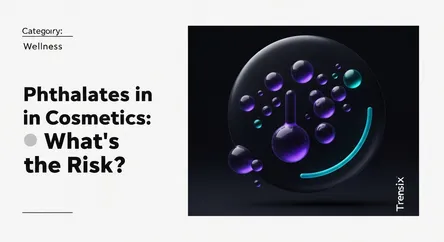Wellness
Phthalates in Cosmetics: What's the Risk?

Learn about phthalates, the hidden chemicals in many beauty products, why they're a trending health concern, and how they can affect your body.
What is it?
Phthalates (pronounced THAL-ates) are a class of man-made chemicals used to make plastics more flexible and durable. In the beauty industry, they are commonly found in products like nail polish, hairspray, shampoo, and lotions. One of their main uses is as a solvent and fixative in fragrances, helping scents last longer. Because phthalates are not chemically bound to the products they are in, they can be absorbed through the skin or inhaled. They are often hidden on ingredient lists under the general term "fragrance" or "parfum".
Why is it trending?
Growing consumer awareness about endocrine-disrupting chemicals (EDCs) has put phthalates in the spotlight. Ongoing scientific research continues to highlight potential health risks, with recent studies associating high phthalate exposure with an increased risk of early death from heart disease. While regulatory bodies like the European Union have banned certain phthalates in cosmetics, they remain prevalent in many U.S. products. This discrepancy fuels a clean beauty movement, with consumers actively seeking "phthalate-free" alternatives and demanding greater ingredient transparency from brands.
How does it affect people?
Phthalates are known endocrine disruptors, meaning they can mimic or interfere with the body's natural hormones. This disruption can lead to significant health issues. Studies have linked exposure to reproductive and developmental harm, including reduced fertility in men and women, and developmental issues in children. Furthermore, chronic exposure is associated with a higher risk of developing conditions like asthma, obesity, diabetes, and certain types of cancer. Nearly the entire U.S. population shows exposure to these chemicals.